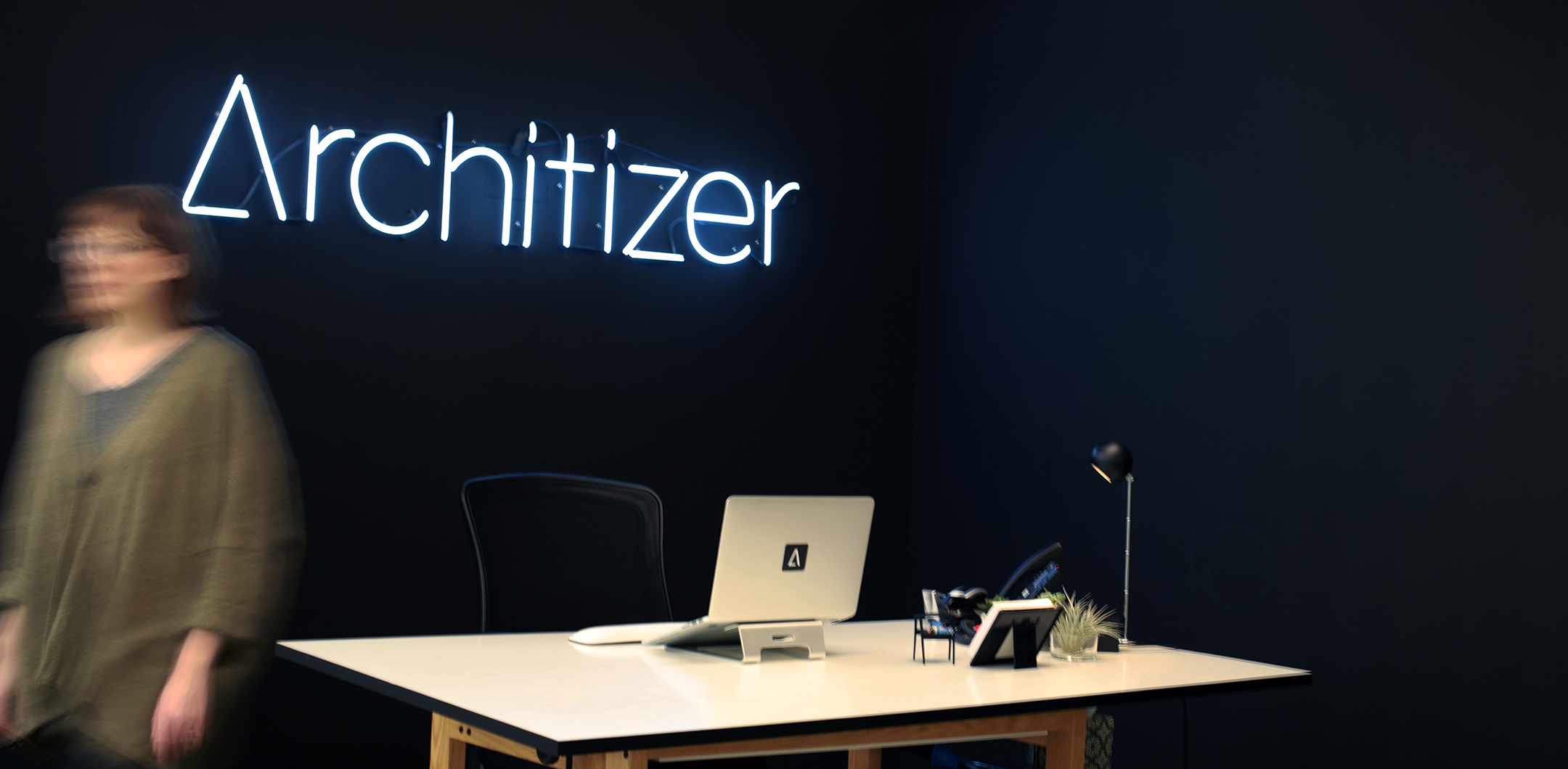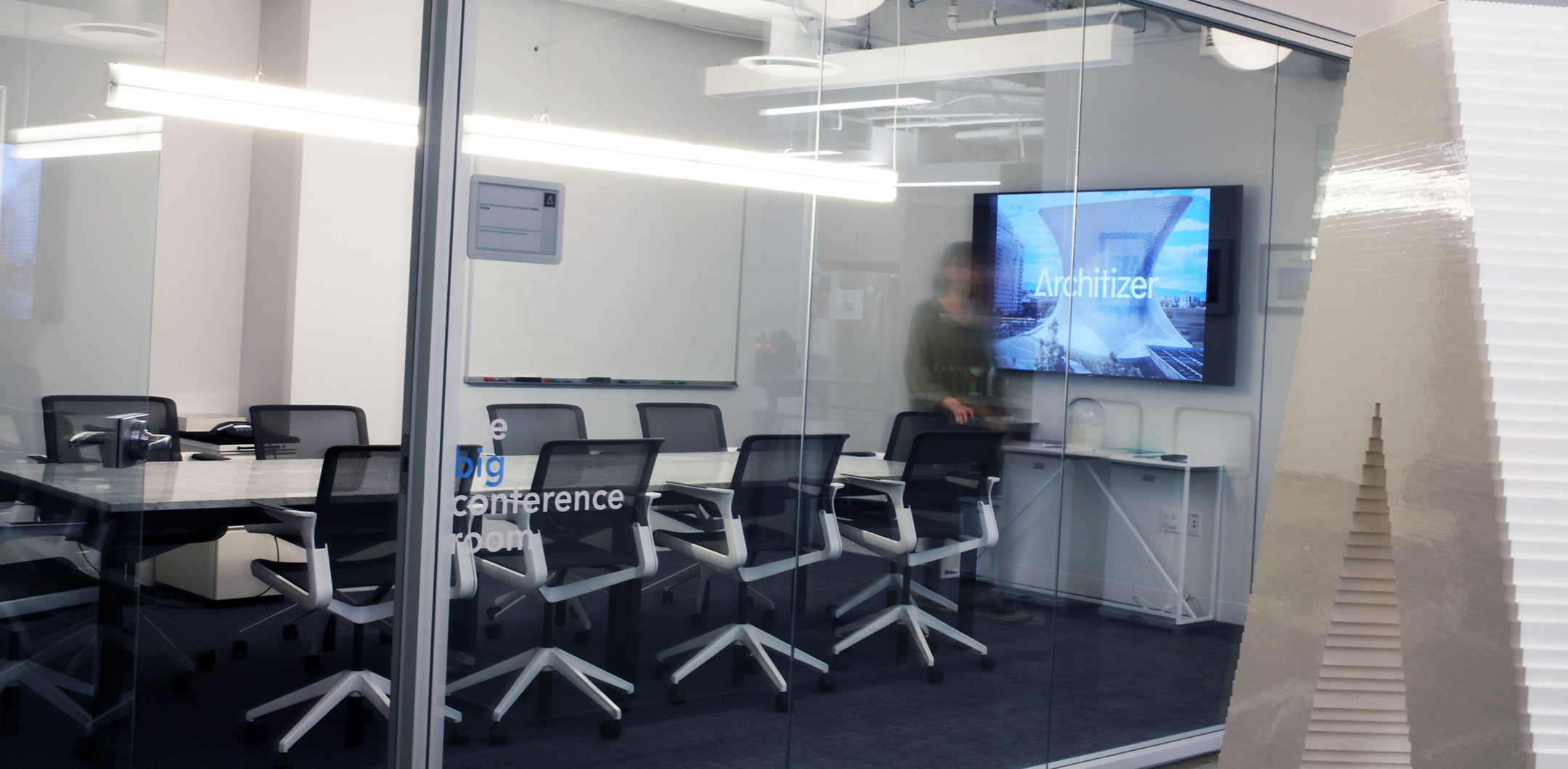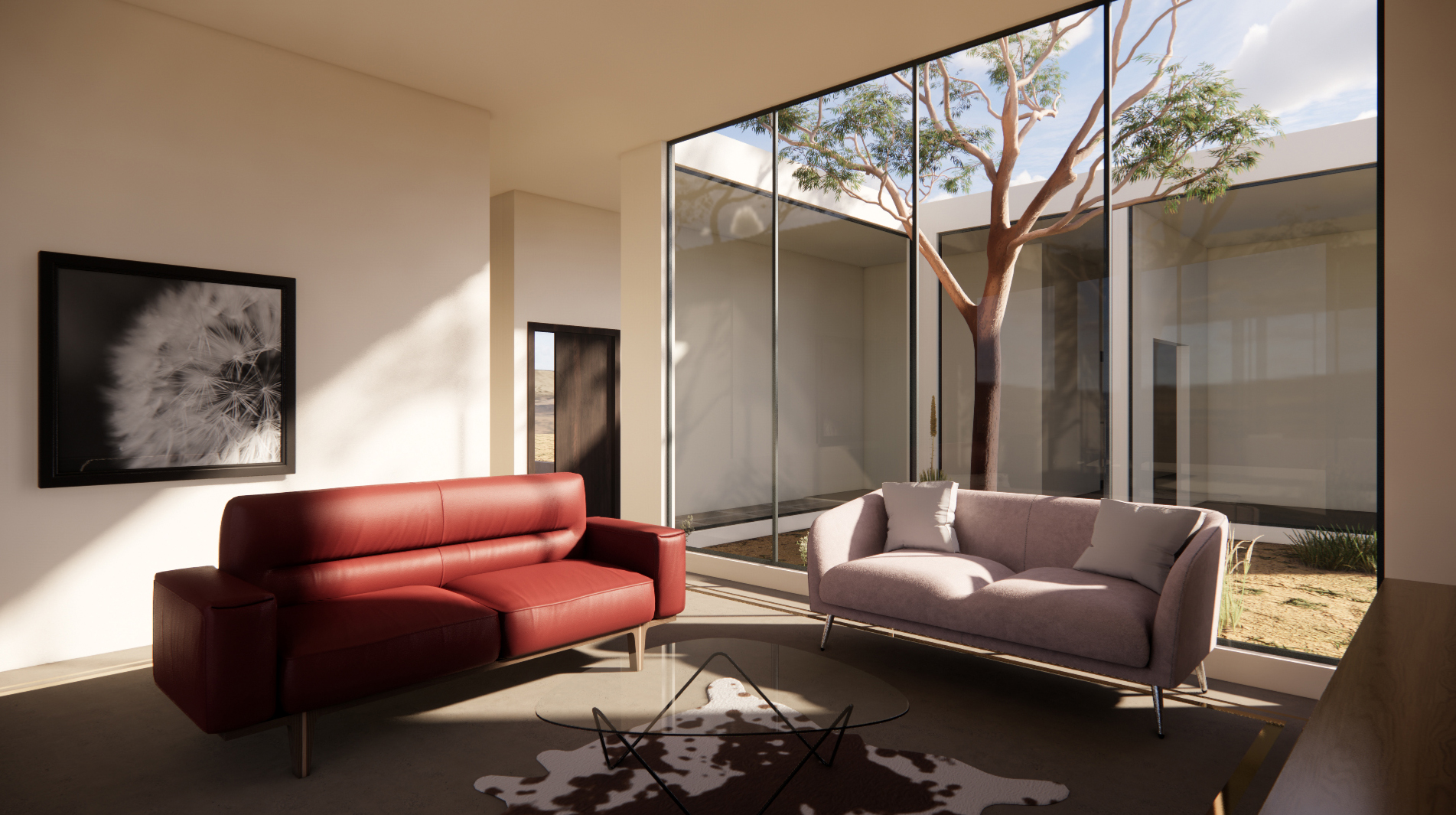In June 2022, Architizer was acquired by Material Bank, the world’s largest marketplace for architectural, design, and construction materials. Material Bank’s acquisition of the platform represented an exciting new step for Architizer. Currently led by David Weber, Architizer was founded in 2009 by Alex Diehl, Matthias Hollwich, Marc Kushner, and Ben Prosky with a mission to help architects build better buildings, better cities, and a better world.
As it embarks on this new path forward, Architizer will remain grounded in the central values that it was founded upon. For this reason, we are using this momentous occasion to look back on the founding of the company. In this four-part series, we ask each of Architizer’s founders to reflect on foundational philosophies and to share stories about the early days of the platform.
In this interview, we sat down with Marc Kushner, the Founder and Principal of MAJOR Architecture, a full-service design firm that believes thoughtfully crafted spaces make for better interactions and better homes.
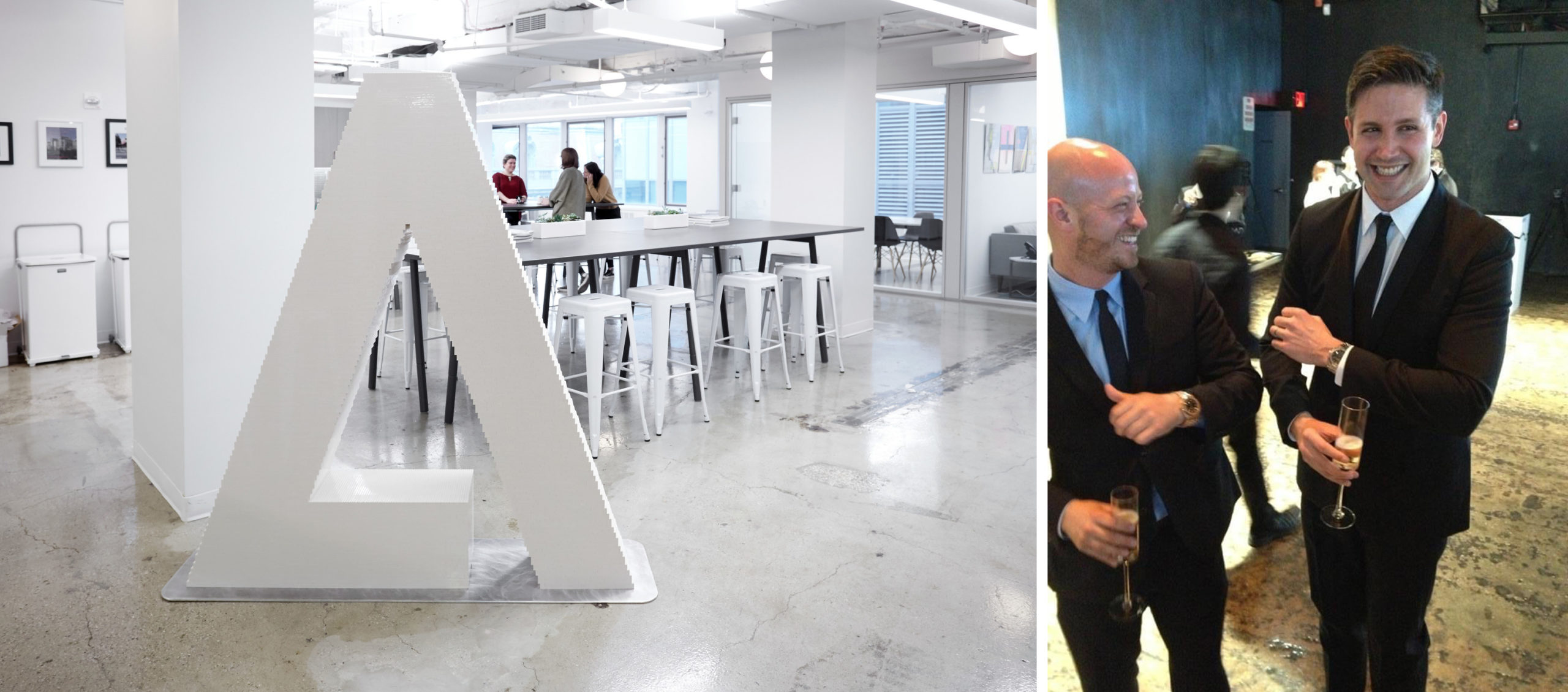
Left: Architizer’s logo built out of white lego blocks (Manhattan office). Right: Ben Prosky and Marc Kushner at one of Architizer’s A+Awards galas.
Hannah Feniak: What was the original goal of Architizer?
Marc Kushner: Facebook, YouTube and Flickr were just taking off at that time. We saw all these things starting to light up for other uses and other constituencies and thought that architecture could potentially ride that wave. That there is power in numbers and by creating this resource — an agglomeration of architects showing their work not just to each other, but to the world — there would be a chance to get people seeing great architecture, talking about great architecture and engaging with great architecture.
Ultimately, what was really a driver at the time was for people to hire architects. There there was that famous or very popular image going around in 2008 of an architect at a farmer’s market with a sign that said $0.05 for architecture. It was a really, really dark time for architects. Really, the reason we could start Architizer was because I have gotten laid off from my job. I had partnered with Matthias to start HWKN, but we had no luck, we had no work, we didn’t have any, didn’t have anything to do. Nothing was going on. So, we had this opportunity to mess around online. And then Alex Diel sort of made the whole thing possible because, as architects, we didn’t really know how to do things online. So, the idea of raising the visibility of younger architects and bringing entrepreneurship to architecture was something that we thought was important.
What is a favorite memory that you have when you think back to the early days of Architizer when you guys were getting it up off the ground?
I think my favorite moment was we did a launch party at Storefront for Art and Architecture. Until then, we had really been working on this thing privately, on our own. Ben was the consummate architectural party thrower, but we had no idea if anyone would show up to Storefront. You know, it’s a really nice night, but for what? For some what network?
So, we printed out some flags with the logo. I distinctly remember us standing on what were basically soapboxes screaming a little speech — a launch speech — with like our fists up in the air saying something about power and numbers, together we can…The place was packed and we had replaced all the light bulbs in there with Architizer blue, which was our color at the time. It was really incredible, it felt very much like a revolution. It felt like fists up in the air — like we would do something collectively together. And that was not a feeling that I think pervades architecture, or pervaded architecture. Maybe it’s different now, but that felt pretty great.
Who was the first advertiser on Architizer?
Okay, this is probably not the first one, but it’s probably the worst and worth mentioning. We had a friend Kenny, and Kenny’s bathroom was disgusting. Like, really vile. AFNY, maybe, which is a plumbing showroom in New York, paid for a competition called “Kenny’s Bathroom, Fix Kenny’s Bathroom, Kenny’s Shitty Bathroom” or something. We shot a really cute video and we basically offered people a chance to compete for a job to fix Kenny’s bathroom. So they paid for the campaign, but it didn’t work. They were very sweet about it. Turns out it’s really hard to fix a bathroom in New York, and boy, did we miss the boat. So, I think that was probably one of the first advertising that we did. Block has just raised $50 million to do the exact same thing to fix people’s bathrooms. We were ahead of our time. We tried to do a lot of things.
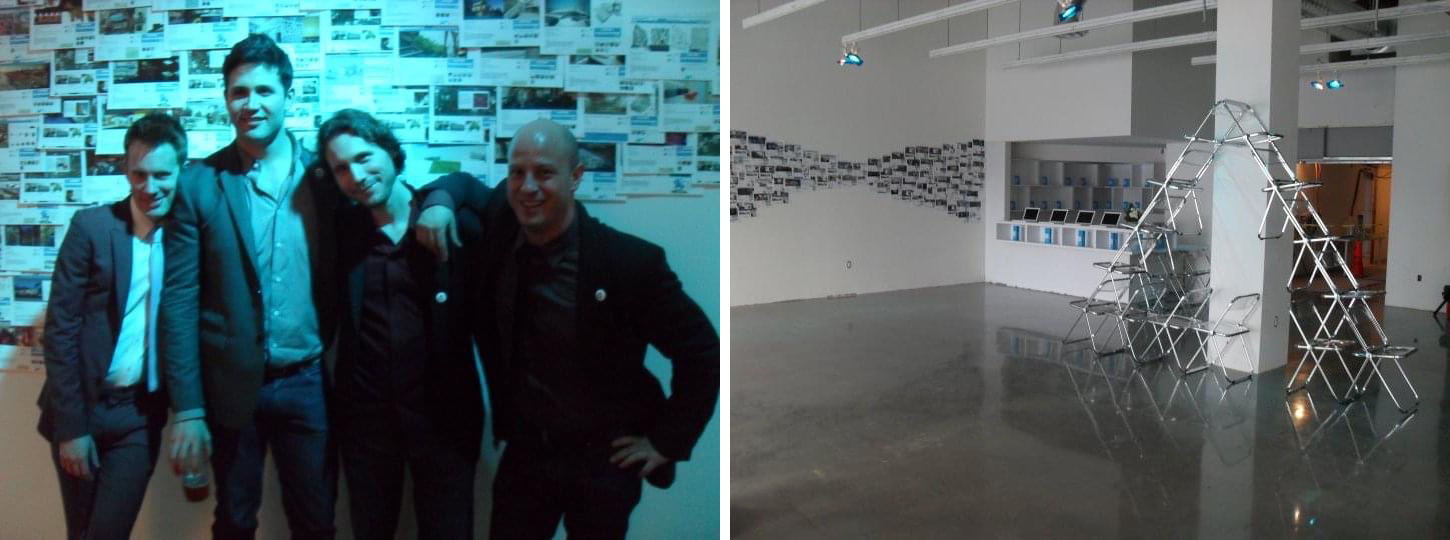
Ryan Quinlan on the left, Architizer’s first employee, with Marc, Alex and Ben. The chair stacked chairs formed a make-shift sculpture of the Architizer logo.
Did running Architizer inform your TED Talk?
In the really early days of Architizer, we were AB testing content on Facebook to see what drove the most traffic to our Architizer, and we quickly figured out was the images that architects were uploading. It was really fascinating to see which images people responded to and which images people just sort of passed through. Some of it was predictable: people really like infinity pools and cantilevers. You know all the negative things about social media — that it lends itself to a fast, surface appreciation of these images, and it doesn’t at all engage with a huge amount of thinking and complexity. But people were responding to these images. I really thought that that was an incredible thing. As I walk with friends, family members, I’m always amazed at how little they see in the built environment around them. They really don’t notice the buildings that are creating the spaces that they like or don’t like. It’s like they somehow aren’t trained to make that leap, to read architecture and to think about architecture and to think about those choices.
What I thought I saw — and what I still think I see — in the power of social media and the Internet, with architecture, is to make architecture legible to a really broad spectrum of people. That’s ultimately what I spoke about a TED. The call that I answered was to speak about 30 years of architectural history, which is impossible. So, I tried to do a quick survey, but what’s the hopeful end to that story? The hopeful end to that story is that Instagram will save us all. Obviously it won’t, but what I think is still a possibility is that it will train people’s eyes to look at buildings. That would be enough, that would be a huge win.
And it was really interesting to see the response from the critics at the time who were deeply troubled by this populism and, I guess to put it in a pithy, short way, I really like Brutalism, but I can’t expect anyone else to really like Brutalism. It’s not worth me worrying about people not worrying about Brutalism because people lack vocabulary to speak about buildings full stop. Forget about Brutalism. Forget about difficult buildings. They can’t even talk about buildings, so if we could just somehow bridge that divide… That’s what I thought I saw the opportunity for in architecture at that time and that’s what I spoke about in the TED Talk.
What are your thoughts on architecture becoming a part of the Material Bank family?
It’s really vindicating. It’s bittersweet as an entrepreneur. We couldn’t have ended up with a better acquirer because we tried this. Let’s say we had a successful publishing platform for architects. Architects were uploading their work. We were working hard to popularize it. We were charging manufacturers advertising to come look at it. And we weren’t satisfied or I wasn’t satisfied, as the CEO. What we saw was that architects were these unheralded, or let’s say, unrewarded shoppers…
What I realized is that architects basically have the cash in their wallet. They are the nation’s largest shoppers. I don’t remember any of the statistics that I used to know, but we control something like $500 billion worth of specifications every year, and we’re calling around like crazy people, scrambling, begging — we’re paying for samples! The whole thing was topsy turvy. I had to go to Chicago to a trade show to go find out what was happening. No one was serving me and I saw that. I mean, that was like a problem with the whole profession. Basically, we have this power and nobody was serving us. Just today we were talking about a paint sample, but it’s a paint sample for a 300 unit high rise. So, $100,000 worth of paint and we’re choosing off of a little chip and making a choice. These are big decisions and we should be wined and dined a little.
So, I really came at this as this populist: architects should be adored for what we do, and we should certainly be served by the people whose products we are shopping for. So, that was like the genesis of the idea of we should be making it easier for architects to find the products that they need, and that led us to Source, and we didn’t quite get there with Source, but what’s so amazing about Material Bank is that they got there and it’s the exact same story. Architects in my firm — without my prompting or anything — are using Material Bank because it makes their life easier. Because… it’s them being served in a way that is commensurate to the power that they actually control.
What are you up to today?
So, I’m back to practicing architecture and I’m working on multi-family housing. Right at the start of the pandemic, I decided that I was not really interested in chasing the high profile cultural or urban or speculative projects internationally. I was much more interested in America’s housing crisis and looking at the suburbs and overlooked cities. Places where I felt like the architecture that I had practiced, that I had been exposed to, had largely forsaken: stick builds, wood construction, four stories, buy a fire farm, pave over and put up 100 apartments, or looking at parking in downtown suburban areas. These are the not glamorous problems, but they’re the problems that will solve America’s housing crisis. I’ve come to believe that they’re more interesting than the big fancy buildings that we were that we were working on and that I have worked on in the past.
The short answer is that I’m working on multi-family housing. The big answer is that I think it’s a privilege to design places where people live, and I always enjoyed designing single family houses and apartments, but it’s a lot more enjoyable to design 300 apartments at the same time and figure out how do to create a community out of that place. Or, even harder, how do you deal with cars and not make it like living in a parking lot? These are these are challenging problems. Yes, I wish we use more trains in America and I wish we walked more and all those things. The reality is what the reality is, and architecture has a role in solving it. We’re working on finding that role.
And it’s actually a bit through education, so it’s really interesting. It’s now part of my job to go and present or give testimony to planning boards. It very much hearkens back to the social media days or the Facebook days of Architizer. You’re getting in front of, say, eight or ten, really concerned and engaged citizens who are really smart but aren’t necessarily tuned into your reading architecture, and you want to curate and show them that this will be good. There’s things that you recognize, there’s some surprising things in it, and crafting that brew, that stew, we could unlock a lot of potential by finding a way to communicate visually through the commission forms.
Congratulations also on taking that new step. What does the future have in store for you?
What’s in the future? No, everything’s great. I’ve got two kids. I live in Brooklyn with my husband and, you know, I’m excited to watch and be helpful to Architizer as it takes this next step and, yeah, nothing really in particular.
Top image by Lucy Wang.
